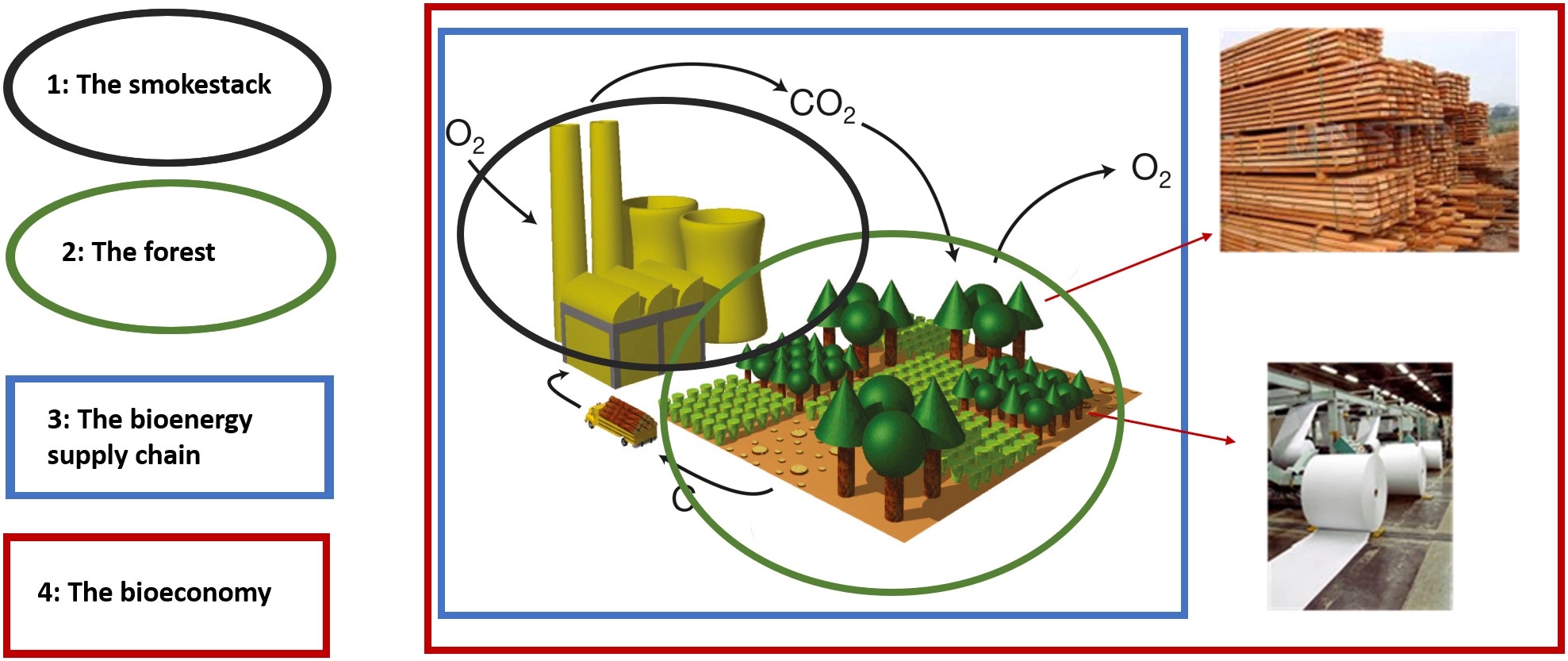|
Biofuels
Biofuel is a fuel that is produced over a short time span from biomass, rather than by the very slow natural processes involved in the formation of fossil fuels such as oil. Biofuel can be produced from plants or from agricultural, domestic or industrial bio waste. Biofuels are mostly used for transportation, but can also be used for heating and electricity. Biofuels (and bio energy in general) are regarded as a renewable energy source. The use of biofuel has been subject to criticism regarding the " food vs fuel" debate, varied assessments of their sustainability, and ongoing deforestation and biodiversity loss as a result of biofuel production. In general, biofuels emit fewer greenhouse gas emissions when burned in an engine and are generally considered carbon-neutral fuels as the carbon emitted has been captured from the atmosphere by the crops used in production. However, life-cycle assessments of biofuels have shown large emissions associated with the potential land ... [...More Info...] [...Related Items...] OR: [Wikipedia] [Google] [Baidu] |
Sustainable Biofuel
Sustainable biofuel is biofuel produced in a Sustainability, sustainable manner. It is not based on petroleum or other fossil fuels. It includes not using plants that are used for food stuff to produce the fuel thus disrupting the world's food supply. Sustainability standards In 2008, the Roundtable for Sustainable Biofuels released its proposed standards for sustainable biofuels. This includes 12 principles: #"Biofuel production shall follow international treaties and national laws regarding such things as air quality, water resources, agricultural practices, labor conditions, and more. #Biofuels projects shall be designed and operated in participatory processes that involve all relevant stakeholders in planning and monitoring. #Biofuels shall significantly reduce greenhouse gas emissions as compared to fossil fuels. The principle seeks to establish a standard methodology for comparing greenhouse gases (GHG) benefits. #Biofuel production shall not violate human rights or labo ... [...More Info...] [...Related Items...] OR: [Wikipedia] [Google] [Baidu] |
Food Vs Fuel
Food versus fuel is the dilemma regarding the risk of diverting farmland or crops for biofuels production to the detriment of the food supply. The biofuel and food price debate involves wide-ranging views and is a long-standing, controversial one in the literature.The Impact of US Biofuel Policies on Agricultural Price Levels and Volatility , By Bruce A. Babcock, Center for Agricultural and Rural Development, Iowa State University, for ICTSD, Issue Paper No. 35. June 2011. There is disagreement about the significance of the issue, what is causing it, and what can or should be done to remedy the situation. This complexity and uncertainty are due to the large number of impacts and feedback loops that ca ... [...More Info...] [...Related Items...] OR: [Wikipedia] [Google] [Baidu] |
Aviation Biofuel
An aviation biofuel (also known as bio-jet fuel, Note: About">Investable Universe>About' sustainable aviation fuel (SAF), or bio-aviation fuel (BAF)) is a biofuel used to power aircraft. The International Air Transport Association (IATA) considers it a key element in reducing the environmental impact of aviation. Aviation biofuel is used to Low-carbon economy, decarbonize medium and long-haul air travel. These types of travel generate the most emissions and could extend the life of older aircraft types by lowering their carbon footprint. Synthetic paraffinic kerosene (SPK) refers to any non-petroleum-based fuel designed to replace kerosene jet fuel, which is often, but not always, made from biomass. Biofuels are biomass-derived fuels from plants, animals, or waste; depending on which type of biomass is used, they could lower emissions by 20–98% compared to Jet A1, conventional jet fuel. The first test flight using blended biofuel was in 2008, and in 2011, blended fuels with 5 ... [...More Info...] [...Related Items...] OR: [Wikipedia] [Google] [Baidu] |
Biodiesel
Biodiesel is a renewable biofuel, a form of diesel fuel, derived from biological sources like vegetable oils, animal fats, or recycled greases, and consisting of long-chain fatty acid esters. It is typically made from fats. The roots of biodiesel as a fuel source can be traced back to when J. Patrick and E. Duffy first conducted transesterification of vegetable oil in 1853, predating Rudolf Diesel's development of the diesel engine. Diesel's engine, initially designed for mineral oil, successfully ran on peanut oil at the 1900 Paris Exposition. This landmark event highlighted the potential of vegetable oils as an alternative fuel source. The interest in using vegetable oils as fuels resurfaced periodically, particularly during resource-constrained periods such as World War II. However, challenges such as high viscosity and resultant engine deposits were significant hurdles. The modern form of biodiesel emerged in the 1930s, when a method was found for transforming vegetable ... [...More Info...] [...Related Items...] OR: [Wikipedia] [Google] [Baidu] |
Renewable Energy
Renewable energy (also called green energy) is energy made from renewable resource, renewable natural resources that are replenished on a human lifetime, human timescale. The most widely used renewable energy types are solar energy, wind power, and hydropower. Bioenergy and geothermal power are also significant in some countries. Some also consider Nuclear power proposed as renewable energy, nuclear power a renewable power source, although this is controversial, as nuclear energy requires mining uranium, a nonrenewable resource. Renewable energy installations can be large or small and are suited for both urban and rural areas. Renewable energy is often deployed together with further electrification. This has several benefits: electricity can heat pump, move heat and Electric vehicle, vehicles efficiently and is clean at the point of consumption. Variable renewable energy sources are those that have a fluctuating nature, such as wind power and solar power. In contrast, ''contro ... [...More Info...] [...Related Items...] OR: [Wikipedia] [Google] [Baidu] |
Cellulose
Cellulose is an organic compound with the chemical formula, formula , a polysaccharide consisting of a linear chain of several hundred to many thousands of glycosidic bond, β(1→4) linked glucose, D-glucose units. Cellulose is an important structural component of the primary cell wall of green plants, many forms of algae and the oomycetes. Some species of bacteria secrete it to form biofilms. Cellulose is the most abundant biopolymer, organic polymer on Earth. The cellulose content of cotton fibre is 90%, that of wood is 40–50%, and that of dried hemp is approximately 57%. Cellulose is mainly used to produce paperboard and paper. Smaller quantities are converted into a wide variety of derivative products such as cellophane and rayon. Conversion of cellulose from energy crops into biofuels such as cellulosic ethanol is under development as a renewable fuel source. Cellulose for industrial use is mainly obtained from wood pulp and cotton. Cellulose is also greatly affected by ... [...More Info...] [...Related Items...] OR: [Wikipedia] [Google] [Baidu] |
Biomass (energy)
In the context of energy production, biomass is matter from recently living (but now dead) organisms which is used for bioenergy production. Examples include wood, wood residues, energy crops, agricultural residues including straw, and Biodegradable waste, organic waste from industry and households. Wood and wood residues is the largest biomass energy source today. Wood can be used as a fuel directly or processed into pellet fuel or other forms of fuels. Other plants can also be used as fuel, for instance maize, switchgrass, miscanthus and bamboo. The main Waste energy, waste feedstocks are wood waste, agricultural waste, municipal solid waste, and manufacturing waste. Upgrading raw biomass to higher grade fuels can be achieved by different methods, broadly classified as thermal, chemical, or biochemical. The Greenhouse gas emissions, climate impact of bioenergy varies considerably depending on where biomass feedstocks come from and how they are grown. For example, wood fuel, bur ... [...More Info...] [...Related Items...] OR: [Wikipedia] [Google] [Baidu] |
Bioenergy
Bioenergy is a type of renewable energy that is derived from plants and animal waste. The Biomass (energy), biomass that is used as input materials consists of recently living (but now dead) organisms, mainly plants. Thus, Fossil fuel, fossil fuels are not regarded as biomass under this definition. Types of biomass commonly used for bioenergy include wood, food crops such as corn, energy crops and waste from forests, yards, or farms. Bioenergy can help with climate change mitigation but in some cases the required biomass production can increase greenhouse gas emissions or lead to local biodiversity loss. The environmental impacts of biomass production can be problematic, depending on how the biomass is produced and harvested. But it still produces CO2; so long as the energy is derived from breaking chemical bonds. The International Energy Agency, IEA's Net Zero by 2050 scenario calls for traditional bioenergy to be phased out by 2030, with modern bioenergy's share increasing fro ... [...More Info...] [...Related Items...] OR: [Wikipedia] [Google] [Baidu] |
Gasoline
Gasoline ( North American English) or petrol ( Commonwealth English) is a petrochemical product characterized as a transparent, yellowish, and flammable liquid normally used as a fuel for spark-ignited internal combustion engines. When formulated as a fuel for engines, gasoline is chemically composed of organic compounds derived from the fractional distillation of petroleum and later chemically enhanced with gasoline additives. It is a high-volume profitable product produced in crude oil refineries. The ability of a particular gasoline blend to resist premature ignition (which causes knocking and reduces efficiency in reciprocating engines) is measured by its octane rating. Tetraethyl lead was once widely used to increase the octane rating but is not used in modern automotive gasoline due to the health hazard. Aviation, off-road motor vehicles, and racing car engines still use leaded gasolines. Other substances are frequently added to gasoline to improve chemical st ... [...More Info...] [...Related Items...] OR: [Wikipedia] [Google] [Baidu] |
Sweet Sorghum
Sweet sorghum or sorgo is any of the many varieties of the sorghum grass whose stalks have a high sugar content. Sweet sorghum thrives better under drier and warmer conditions than many other crops and is grown primarily for forage, silage, and syrup production. Sweet sorghum syrup is known as sorghum molasses in some regions of the United States, though in most of the U.S. the term ''molasses'' refers to a sweet syrupy byproduct of sugarcane or sugar beet sugar extraction. Cultivation Sweet sorghum has been widely cultivated in the U.S. since the 1850s for use in sweeteners, primarily in the form of sorghum syrup. In 1857 James F. C. Hyde wrote, "Few subjects are of greater importance to us, as a people, than the producing of sugar; for no country in the world consumes so much as the United States, in proportion to its population." The price of sugar was rising because of decreased production in the British West Indies and more demand for confectionery and fruit preserves, ... [...More Info...] [...Related Items...] OR: [Wikipedia] [Google] [Baidu] |
Fuel
A fuel is any material that can be made to react with other substances so that it releases energy as thermal energy or to be used for work (physics), work. The concept was originally applied solely to those materials capable of releasing chemical energy but has since also been applied to other sources of heat energy, such as Nuclear power, nuclear energy (via nuclear fission and nuclear fusion). The heat energy released by reactions of fuels can be converted into mechanical energy via a heat engine. Other times, the heat itself is valued for warmth, cooking, or industrial processes, as well as the illumination that accompanies combustion. Fuels are also used in the Cell (biology), cells of organisms in a process known as cellular respiration, where organic molecules are oxidized to release usable energy. Hydrocarbons and related organic molecules are by far the most common source of fuel used by humans, but other substances, including radioactive metals, are also utilized. Fu ... [...More Info...] [...Related Items...] OR: [Wikipedia] [Google] [Baidu] |






